Research Platforms
Image et Signal pour Energie et Environnement
Description
Location: ENSE3, room 03 D 005
This platform is part of PREDIS, educational and research center in energy of ENSE3. In terms of education, the platform is used for different labworks (undergraduate and master students) subject of almost 12000 hours/year. The research activities, which involve students at all levels (undergraduate/master/PhD students), developed in this platform are generally related to the definition and experimental validation if algorithms for processing of non-stationary and transient signals in different applications: non destructive testing using ultrasound sensing, physical parameter estimation, transient sources localization, radar for environment study,… Beside the current equipment for labworks, three demonstrators are available :
-
Hybrid sensor array (electromagnetic and ultrasound) for detection and localization of transient signals such us electrical arcs (this demonstrator is inspired by Arc Locator project):
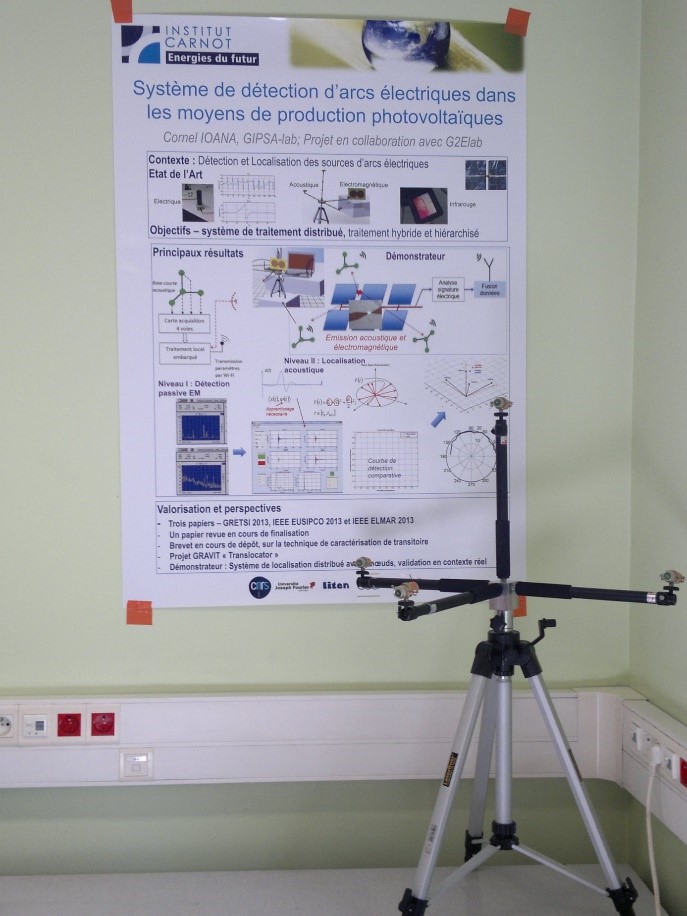
-
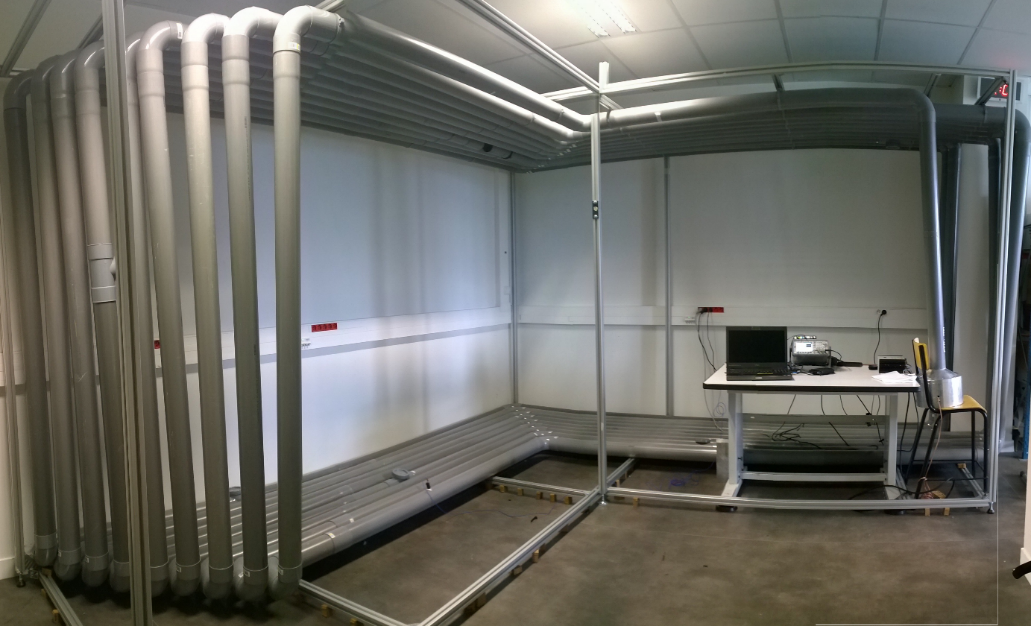 Multi-sensor acoustic system with distributed processing (detection, classification, localisation) with generic techniques phase anlaysis, time-frequency analysis, matching filtering,..Application for detection and localisation of obstacles in pipes (project funded by EDF DTG in 2017)
Multi-sensor acoustic system with distributed processing (detection, classification, localisation) with generic techniques phase anlaysis, time-frequency analysis, matching filtering,..Application for detection and localisation of obstacles in pipes (project funded by EDF DTG in 2017) -
Illustration of the application of distributed sensor grid for passive localization of drones
-
Distributed sensing of transient sources in power grids– TRANSLOCATOR project
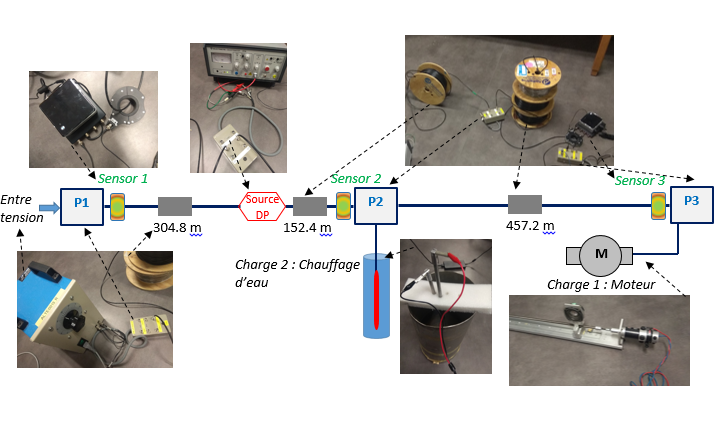
Key points
- • Projects : Translocator, collaborations with EDF
- • In progress : monitoring of power transformer
- • 3 PhD theses and almost 5 Masters/PFE /year
- • Long life training: HAGER Security, ST Microelectonics, CEA
- • Learn by Doing : 1 industrial project/year, two labworks project-oriented
- • Collaboration with other Laboratories: CEA LETI, G2Elab but also start-ups : www.altransinnov.com
-
Acces via Laboratory Website
Hydro Signal education & research platform
Description
Location: GIPSA-lab, B building, Platform space, 11 rue des Mathématiques, 38402 Saint Martin D’Heres
This platform provides the experimental facilities for the definition of signal processing and multi sensing systems for the study of non-stationary and turbulent flows. This type of flow and the associated phenomena constitute a general topic in various applications such as pipes in power plants, water distribution systems, underwater environments. The experimental facility is composed by a water tank, an under-pressure balloon and system of pipes and valves emulating a water pipes system of a power plant. The sensing is based on a set of acoustic sensors in various bandwidth : acoustic (0-10 kHz), ultrasound (300 kHz, 500 kHz and 1 MHz). Also, the pressure measurements in three points are also available.
-
Flow rate measurement and Hydro transient monitoring using distributed sensing and central AI system
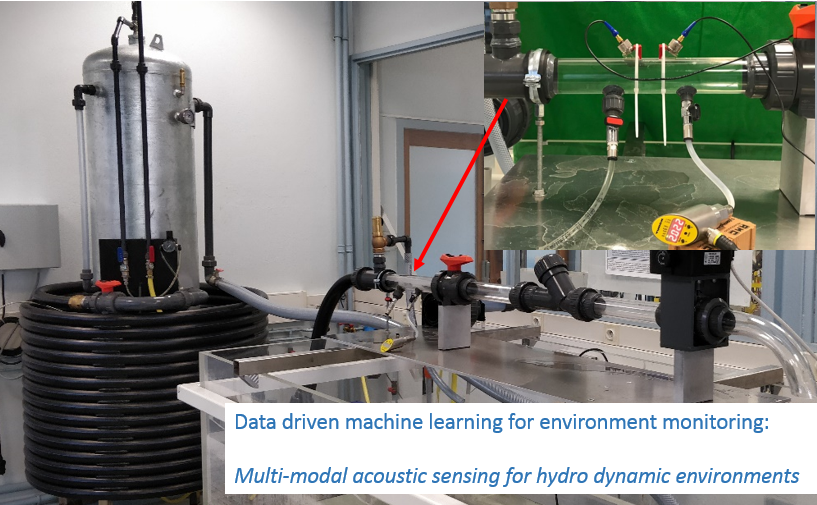
-
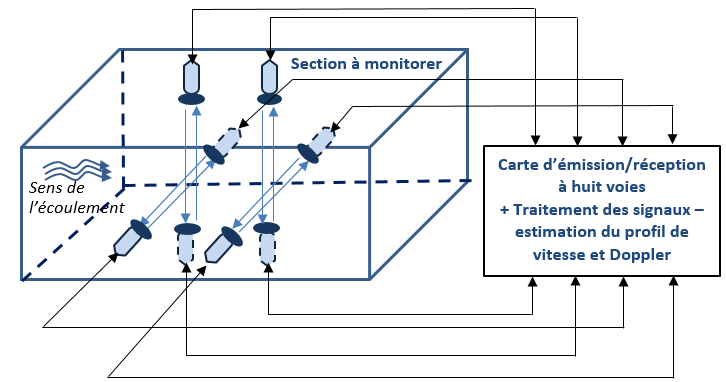 The successive results converge to the definition of a multi disciplinary global plate-form for the ultrasonic analysis of the dynamic flows. Thanks to the Grenoble INP support, in 2019-2020, we succeded to build the ATIS - Acoustic Tomography for Flow Instabilities Study defined here.
The successive results converge to the definition of a multi disciplinary global plate-form for the ultrasonic analysis of the dynamic flows. Thanks to the Grenoble INP support, in 2019-2020, we succeded to build the ATIS - Acoustic Tomography for Flow Instabilities Study defined here. -
Another field of research, both theoretical and experimental, concerns the acoustic imagery in dynamic conditions – turbulent flow, solid transport, etc. The collaborations with EDF, Thalès and ITER Sytems took advantage of this experimental facility.
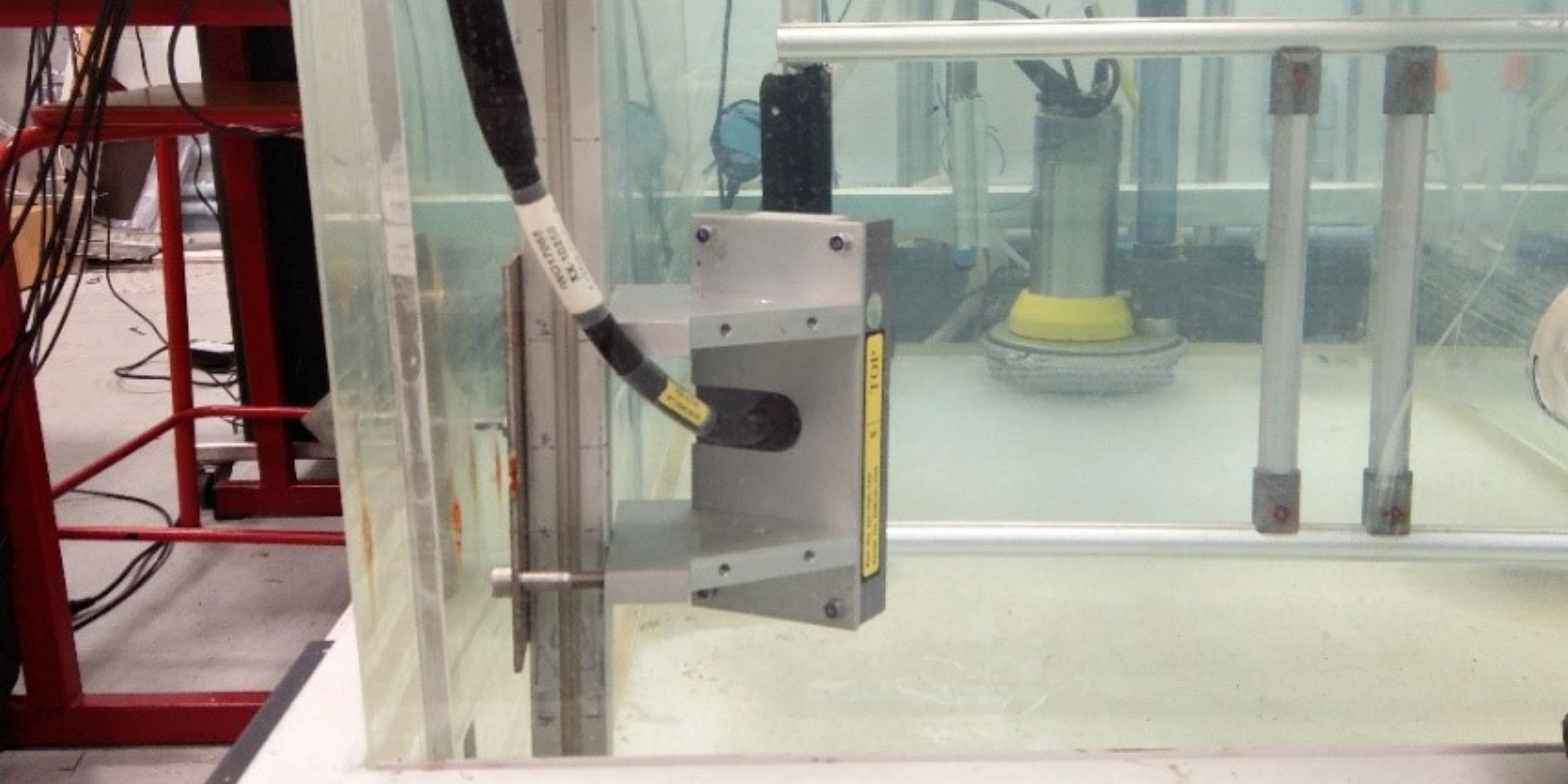
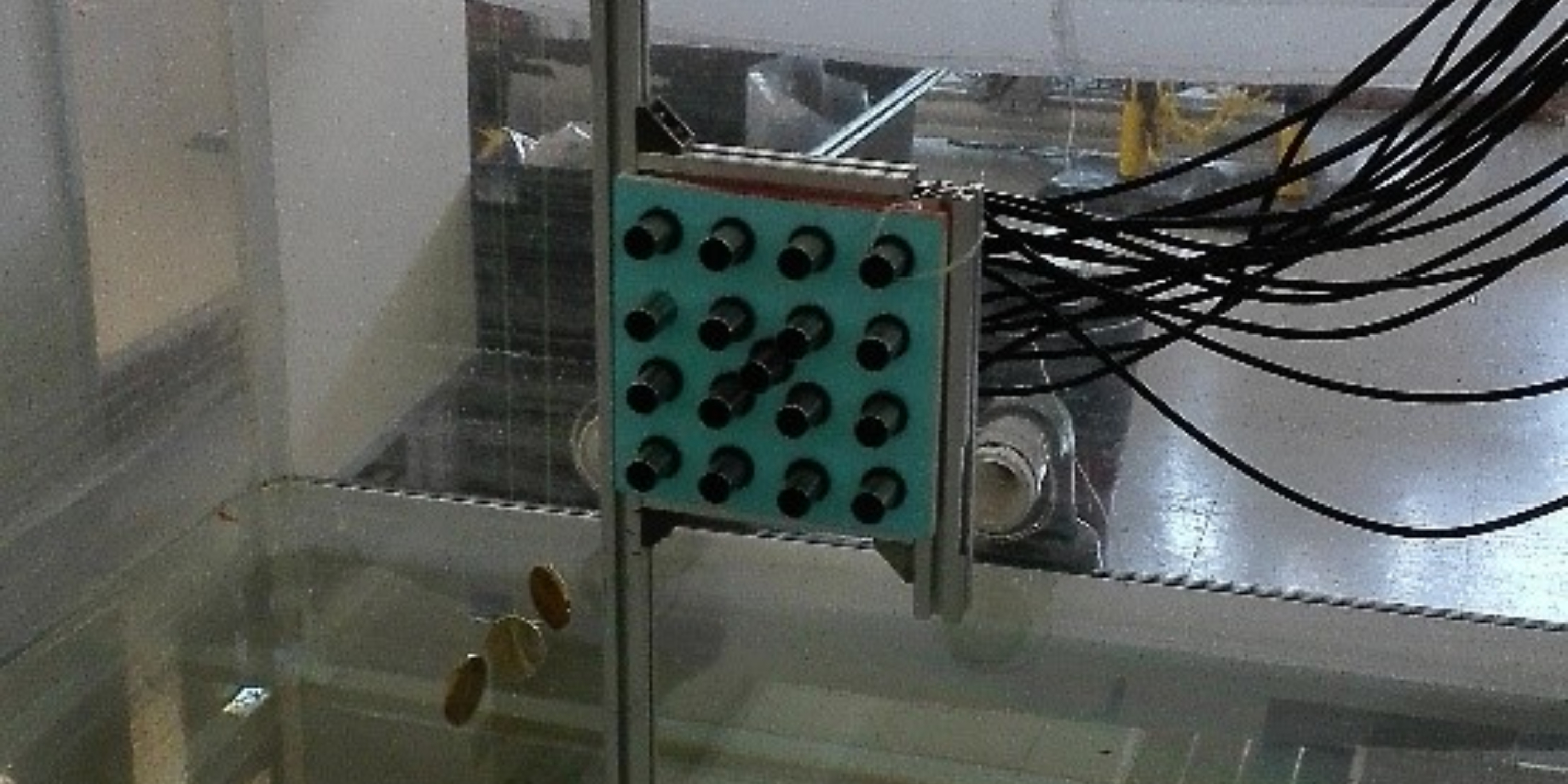 Underwater imaging – Top image, test prototype with ITER Systems
sonar;
Bottom image – multi array acoustic antenna developed in
collaboration with
EDF
Underwater imaging – Top image, test prototype with ITER Systems
sonar;
Bottom image – multi array acoustic antenna developed in
collaboration with
EDF
-
This platform was also of great benefit of the Underwater distributed sensing developed in GREENAR project
-
The platform is also used for the study of transient phenomena affecting the hydraulic equipment. A typical phenomenon whose surveillance is crucial is the resonance of the hydraulic circuits. Actually, in specific conditions, if the closing elements (valves) do not operate properly, the fluid pressure does not attenuate but it is maintained because of auto oscillating regime. The early detection of these transients are crucial in order to avoid the system collapsing. The study of this phenomenon is quite complicate and generally only the simulations are available. As an experimental facility, Hydro Signal platform is among the worldwide unique reduced scale tool to study this phenomenon.
-
Illustration of the hydraulic resonance phenomenon
-
The signal corresponding of such phenomena
See more to: Mothrys

Key points
- • Projets : collaborations with EDF, since 2010; Smart Hydro Monitoring; GREENAR
Valorisation & Mutualisation
- • Cooperations with other laboratories: CEA LETI, LEGI, but also start-ups: Fondation Chorrus
-
Acces via Laboratory Website